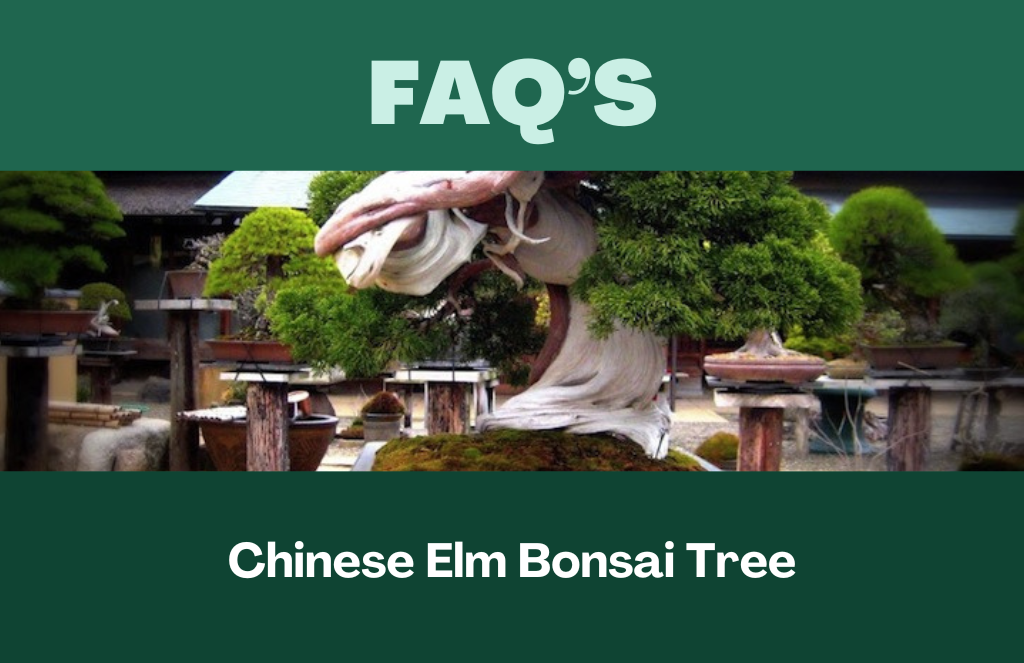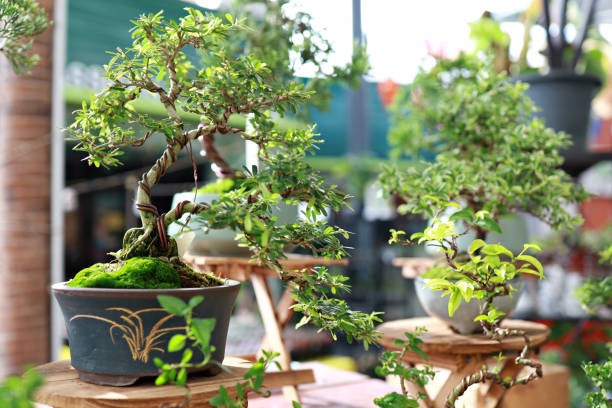What do the Chinese elm bonsai tree’s yellow leaves mean?
Yellow leaves on a Chinese Elm Bonsai may signal overwatering or insufficient sunlight, requiring immediate attention. Potential issues include overwatering, nutrient deficiencies, stress, cold environments, incorrect watering techniques, inadequate light, unsuitable climate, Dutch elm disease, and systemic infections affecting the phloem. Addressing these factors promptly is crucial for the overall health and well-being of the bonsai.
Chinese Elm Bonsai trees are sensitive to excessive moisture and thrive in bright, indirect sunlight. The presence of yellow leaves suggests the need to adjust the watering routine and ensure adequate light exposure for the bonsai tree.
Taking these measures will help maintain the health and vitality of the Chinese Elm Bonsai, enabling it to flourish and showcase its beauty in your indoor or outdoor space.
What Causes Of Yellow Leaves On Chinese Elm Bonsai Trees?
Yellow leaves on Chinese Elm bonsai trees can be a cause for concern and indicate underlying issues that need to be addressed. Understanding the possible causes of yellowing leaves is essential to remedy the problem and ensure the health and vitality of your bonsai.
Insufficient Watering
One of the primary causes of yellow leaves on Chinese Elm bonsai trees is insufficient watering. Bonsai trees require a delicate balance of moisture, and if they are not provided with adequate water, the leaves may begin to turn yellow.
To determine if your tree is suffering from insufficient watering, check the moisture level of the soil regularly. If the soil feels dry to the touch, it may be an indication that your bonsai needs to be watered.
Alternatively, if the soil feels overly wet or is constantly saturated, this may be a sign of overwatering, which can also result in yellow leaves.
Overwatering
Just as insufficient watering can cause yellowing leaves on Chinese Elm bonsai trees, overwatering can have a similarly detrimental effect. Overwatering can lead to waterlogged soil, which in turn deprives the roots of oxygen and creates a suffocating environment for the tree.
This can lead to yellow leaves, as the roots are unable to absorb the necessary nutrients and water. To avoid overwatering, ensure that the pot has proper drainage and allow the soil to partially dry out before watering again.
Inadequate Light
Proper lighting is crucial for the health of bonsai trees, and inadequate light can contribute to yellow leaves. Chinese Elm bonsai trees need bright, indirect light to thrive. If your tree is not receiving enough light, it may exhibit signs of stress, such as yellowing leaves.
Place your bonsai in a location where it can receive ample sunlight or use supplemental grow lights to ensure sufficient light exposure.
Incorrect Temperature
Chinese Elm bonsai trees are hardy and can tolerate a wide range of temperatures, but extreme fluctuations or prolonged exposure to temperature extremes can cause yellowing leaves.
Suboptimal temperatures can stress the tree, affecting its overall health and leading to leaf discoloration. Maintain a moderate and consistent temperature range to ensure your Chinese Elm bonsai thrives and its leaves remain green and healthy.
Nutrient Deficiency
A lack of essential nutrients can also be a factor in the development of yellow leaves. Chinese Elm bonsai trees require a balanced fertilizer regimen to fulfill their nutritional needs.
If the tree is not receiving adequate nutrients, it may exhibit signs of nutrient deficiency, including yellowing leaves.
To remedy this situation, ensure you are using a suitable bonsai fertilizer and following the recommended feeding schedule.
Root Problems
Root problems can manifest in various ways, including yellowing leaves. If the roots of your Chinese Elm bonsai tree are damaged, diseased, or overcrowded, it can adversely affect the tree’s ability to absorb water and nutrients, leading to leaf discoloration.
Regularly check the root system for any signs of issues, such as root rot or circling roots, and take appropriate action to address them.
Credit: gardening.stackexchange.com
How To Identify The Cause Of Yellow Leaves?
If you’re a proud owner of a Chinese Elm Bonsai tree, you may have noticed yellow leaves on your plant. While seeing yellow leaves can be concerning, it’s important to understand that they can indicate various issues. By observing leaf color and texture, checking soil moisture, assessing light conditions, and evaluating temperature levels, you can identify the cause of the yellow leaves and take appropriate action to revive your bonsai tree.
Leaf Color And Texture
One of the first steps in identifying the cause of yellow leaves is to closely observe the color and texture of the affected leaves. This can help you narrow down the potential issues.
Here are a few observations you can make:
- Are the yellow leaves also wilting or drooping?
- Do the affected leaves have spots, discoloration, or unusual patterns?
- Are the yellow leaves accompanied by changes in leaf size or shape?
By paying attention to these details, you can get valuable clues about whether the yellowing is due to overwatering, underwatering, nutrient deficiencies, pests, or other factors.
Checking Soil Moisture
Another crucial factor to address when addressing yellow leaves is the soil’s moisture content. Improper watering is a frequent culprit. To assess the soil, insert your finger about an inch deep. Feel for dryness, moisture, or wetness, but avoid depending solely on the surface layer, which may dry out faster than the lower regions that retain moisture.
If the soil feels too dry, it may indicate that your bonsai tree is not receiving enough water. On the other hand, saturated or waterlogged soil can lead to root rot and yellowing leaves.
Assessing Light Conditions
Light is essential for healthy plant growth, including bonsai trees. Insufficient or excessive light can both result in yellow leaves.
- Is your Chinese Elm Bonsai tree receiving adequate sunlight?
- Is it exposed to direct sunlight or partial shade?
- Has there been any recent change in light conditions?
Bonsai trees require a balance of light exposure to thrive. If your plant is not getting enough light, it can result in weakened leaves and yellowing. Conversely, too much direct sunlight can lead to leaf burn and discoloration..
How To Solve Yellow Leaves On Chinese Elm Bonsai Trees?
Yellow leaves on your Chinese Elm Bonsai tree can be a cause for concern and indicate underlying issues. However, by addressing these issues promptly, you can restore the health and vitality of your bonsai.s.
Adjusting Watering Routine
One common reason for yellow leaves on Chinese Elm Bonsai trees is improper watering. Overwatering or underwatering can stress the plant, leading to leaf discoloration. To prevent this, you should adjust your watering routine accordingly.
- Ensure the soil is moist, but not overly saturated. A good way to check is by inserting your finger into the soil about an inch deep. If it feels damp, hold off on watering.
- Water the tree thoroughly, allowing the excess water to drain out from the drainage holes at the bottom of the pot.
- Use a well-draining soil mix to prevent waterlogged roots.
Ensuring Proper Drainage
To ensure proper drainage for Chinese Elm Bonsai trees and prevent waterlogging, which can lead to root suffocation and yellow leaves, follow these steps. Utilize a bonsai pot with ample drainage holes to enable the escape of excess water.
Line the pot’s bottom with a coarse material such as lava rock or bonsai soil to enhance drainage. Regularly clear any obstructions from the drainage holes to avoid the accumulation of water.
Providing Adequate Light
Another factor contributing to yellow leaves is inadequate light exposure. Chinese Elm Bonsai trees require bright, indirect sunlight to thrive. Lack of light can weaken the tree, resulting in yellowing foliage.
- Place your bonsai tree near a south-facing window where it can receive plenty of indirect sunlight.
- Consider using artificial grow lights if natural light is limited in your living space.
Maintaining Optimal Temperature
Chinese Elm Bonsai trees thrive in moderate temperatures, and exposure to extremes can stress them, resulting in yellowing leaves. To ensure optimal temperature conditions, refrain from placing your bonsai near heaters or air conditioners that cause temperature fluctuations. During winter, safeguard your bonsai from freezing temperatures by positioning it away from drafty windows and providing additional insulation.
Addressing Nutrient Deficiencies
Yellow leaves on Chinese Elm Bonsai trees may indicate nutrient deficiencies, emphasizing the importance of a well-balanced fertilization routine. Utilize a balanced, slow-release organic bonsai fertilizer throughout the growing season to provide essential nutrients. Follow the fertilizer package instructions to avoid overfertilization, which can contribute to leaf yellowing.
Taking Care Of Root Issues
Root problems, such as root rot or root binding, can hinder nutrient absorption and lead to yellow leaves. To address root issues, carefully examine the roots for signs of rot or decay. If root rot is detected, remove the affected roots and repot the bonsai in fresh, well-draining soil. In cases of a tightly packed root ball, gently loosen the roots during repotting to encourage healthy growth.
Frequently Asked Questions

What Causes Yellow Leaves On Chinese Elm Bonsai Trees?
Yellow leaves on Chinese Elm bonsai trees can be caused by overwatering, inadequate sunlight, nutrient deficiencies, pests, or diseases. It is important to assess the specific conditions and address any underlying issues to promote healthy growth and prevent further leaf yellowing.
Consulting with a bonsai expert or horticulturist can help identify the exact cause and provide appropriate solutions.
How Can I Prevent Yellow Leaves On My Chinese Elm Bonsai Tree?
To prevent yellow leaves on your Chinese Elm bonsai tree, ensure proper watering by allowing the soil to dry between waterings. Place the bonsai in a location with adequate sunlight, around 6-8 hours per day. Use a balanced fertilizer to provide essential nutrients and regularly inspect for pests or diseases.
Maintaining a suitable environment and practicing good bonsai care techniques will help keep the leaves vibrant green.
Can Yellow Leaves On Chinese Elm Bonsai Trees Be Reversed?
In some cases, yellow leaves on Chinese Elm bonsai trees can be reversed by addressing the underlying cause. Adjusting watering habits, providing more sunlight, and correcting nutrient deficiencies can encourage new, healthy leaf growth. However, if the yellowing is due to pest infestation or severe disease, it may be challenging to reverse the damage.
Timely intervention and proper care are crucial in increasing the chances of leaf recovery.
Conclusion
To summarize, yellow leaves on a Chinese Elm Bonsai tree can signal a variety of issues. These can include overwatering, underwatering, insufficient light, pests, or diseases. It is essential to closely observe your bonsai for any signs of distress and take appropriate action like adjusting watering schedules, providing adequate light, or seeking professional advice.
By addressing these concerns promptly, you can ensure the health and longevity of your beautiful Chinese Elm Bonsai tree.Chinese Elm Bonsai Yellow Leaves

